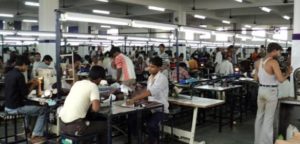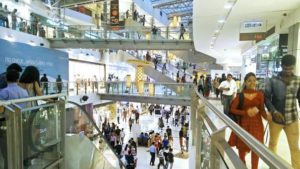
“Our offering is increasingly qualified, not only in terms of design, but also in terms of expertise with an orientation towards sustainability. – declared R. Selvam, the new executive director of CLE – The Indian leather and footwear industry’s upgrade has resulted in a decided rise in exports, which during the two-year period of 2017-18 arrived at a value of 5.7 billion dollars, up +1.65% from 2016-17, with 55% destined for Europe. As far as footwear alone is concerned, India’s share of leather footwear imports in Europe is equal to 5.45%, while in Italy, its imports are equal to 4.55%”.
The second biggest producer worldwide right after China, with a production of 2.26 billion pairs for a value of 12.49 billion dollars in the two-year period of 2017-18, India’s share of global production is equal to 9.5% and its intention is to push for further growth over the next few years, by counting on both a rise in consumption from its enormous domestic market (1.35 billion people who currently consume 2 pairs per capita annually, but who over the next 5 years, according to estimates, will arrive at 4 pairs each) and on its ability to attract foreign production investments: “There are many competitive advantages to investing in our country. – explains R. Selvam – India is quickly expanding, with GDP growth equal to 7.7%, and indicators are positioning us at 11th place in the worldwide classification of the Consumer Trust Index (the second developing country to rank among the first 11 countries) and among the top 100 destinations where it is easiest to do business according to the World Bank, as well as the third leading economy in terms of purchasing power parity. Finally, we have a lot of land available for constructing new production plants and can set up a workforce at a reasonable cost that ranges between 120-150 dollars per month”.
The m odern productive model of Indian footwear has evolved through a system of vertical integration that includes a large amount of available raw material, eco-friendly tanneries, an industry of components and uppers, and production for international brands. There are two directions for development: sustainability, promoted through the ZED project – Zero Defect, Zero Effect, which promotes productive processes with zero environmental impact; and professional training to further qualify the workforce and increase its productivity.
odern productive model of Indian footwear has evolved through a system of vertical integration that includes a large amount of available raw material, eco-friendly tanneries, an industry of components and uppers, and production for international brands. There are two directions for development: sustainability, promoted through the ZED project – Zero Defect, Zero Effect, which promotes productive processes with zero environmental impact; and professional training to further qualify the workforce and increase its productivity.
From a bureaucratic and financial standpoint, there are further incentives for investment: the possibility of importing raw materials duty free; and automatic approval for foreign investments destined for production plants (without requiring pr evious approval from the Indian Government), for the retail sector and for duty free shops. Additionally, there is the possibility to repatriate profits and dividends of investments and a reduced tax rate (of 25%) for companies with a turnover of 32 million euros or less. A package of proposals reinforces the “Make in India” programme promoted by Narenda Modi that encourages growth in Indian productive sectors and attracts investments: “India has laid down the road map for its future: – concludes R. Selvam – European entrepreneurs can set up production plants through Foreign Direct Investment schemes that can either be 100% private or in partnership with Indian companies, with the possibility of also exporting products. There is the possibility to jointly collaborate in branding and reinforce the ties between India and the EU through the signing of the Trade and Investment Partners
evious approval from the Indian Government), for the retail sector and for duty free shops. Additionally, there is the possibility to repatriate profits and dividends of investments and a reduced tax rate (of 25%) for companies with a turnover of 32 million euros or less. A package of proposals reinforces the “Make in India” programme promoted by Narenda Modi that encourages growth in Indian productive sectors and attracts investments: “India has laid down the road map for its future: – concludes R. Selvam – European entrepreneurs can set up production plants through Foreign Direct Investment schemes that can either be 100% private or in partnership with Indian companies, with the possibility of also exporting products. There is the possibility to jointly collaborate in branding and reinforce the ties between India and the EU through the signing of the Trade and Investment Partners hip, which is currently under negotiation”.
hip, which is currently under negotiation”.
There are also enormous opportunities offered up by India as an end market: the huge consumer base, the progressive growth of the middle class and of annual per capita purchasing power, along with the adoption of consumer models similar to those in mature markets, are the most interesting indicators from this standpoint, together with the expectation of doubling footwear consumption over the next five years. All this sees experts declaring India to be the next retail mecca.
Currently, in India, 1.950 billion pairs of shoes are purchased annually, through an organised retail network, which in recent years, has grown just as rapidly as footwear production. In the Indian market, men’s footwear has historically been the most important both in terms of numbers and q uality, but lately also women’s and children’s footwear are experiencing growth: offering those who desire it ample room to carve out significant market shares for themselves.
uality, but lately also women’s and children’s footwear are experiencing growth: offering those who desire it ample room to carve out significant market shares for themselves.
Data supplied by the Confindustria Moda Research Centre for Assocalzaturifici, outlines how in 2017, Made in Italy exported 284,409 pairs of shoes to India, for a value of 8.2 million euros at an average price of 28.72 euros per pair, in what is a negative trend from the previous year both in terms of quantity (-43.4%) and value (-31%), but with a significant increase in the average cost (+21.8%). The extremely low values position the Indian market at 56th place in the top destinations for Made in Italy in terms of qua ntity and at 57th place in terms of volume. The trend of the first quarter 2018 is more encouraging, with a recovery of +11.8% in quantity and +3.2% in value, in contrast to a lower average price per pair (-7.6%).
ntity and at 57th place in terms of volume. The trend of the first quarter 2018 is more encouraging, with a recovery of +11.8% in quantity and +3.2% in value, in contrast to a lower average price per pair (-7.6%).
Accordingly, there is room for growth in India also for Italian footwear, confirming the pathway of expansion being undertaken by this market on all fronts, between direct production and outsourcing, and imports and exports.



